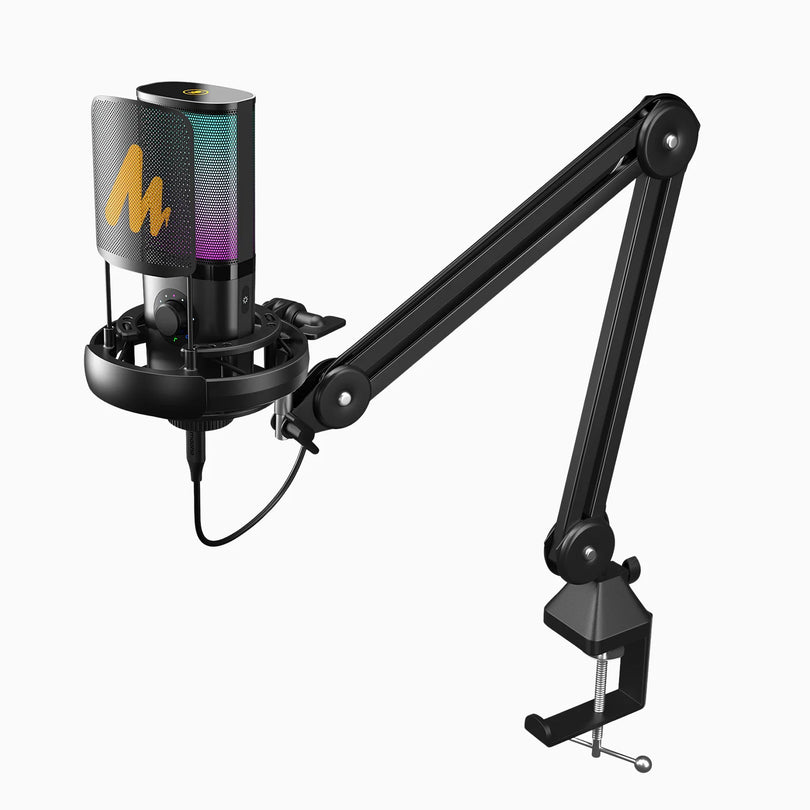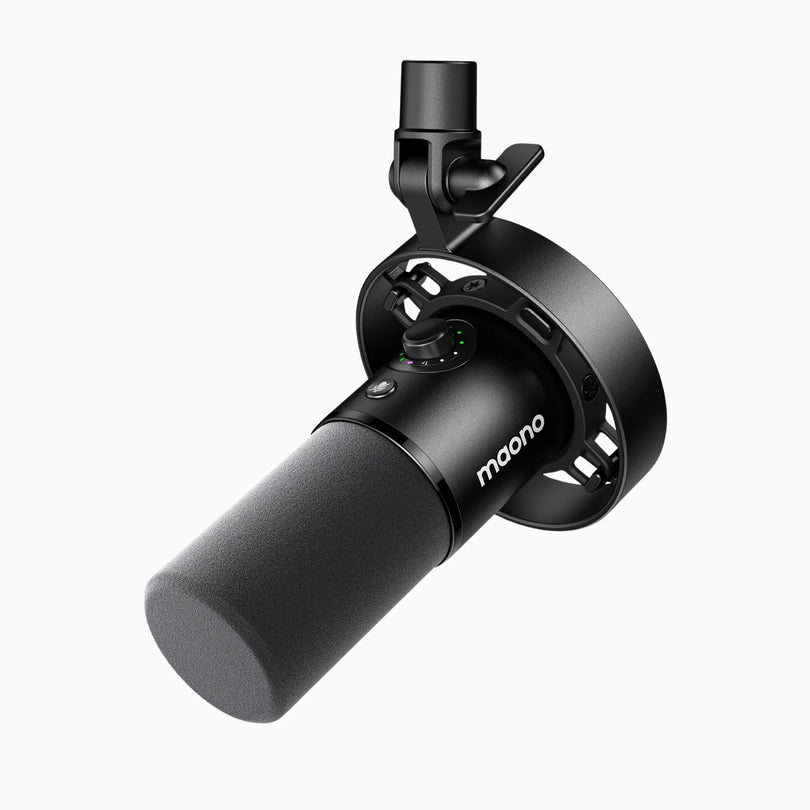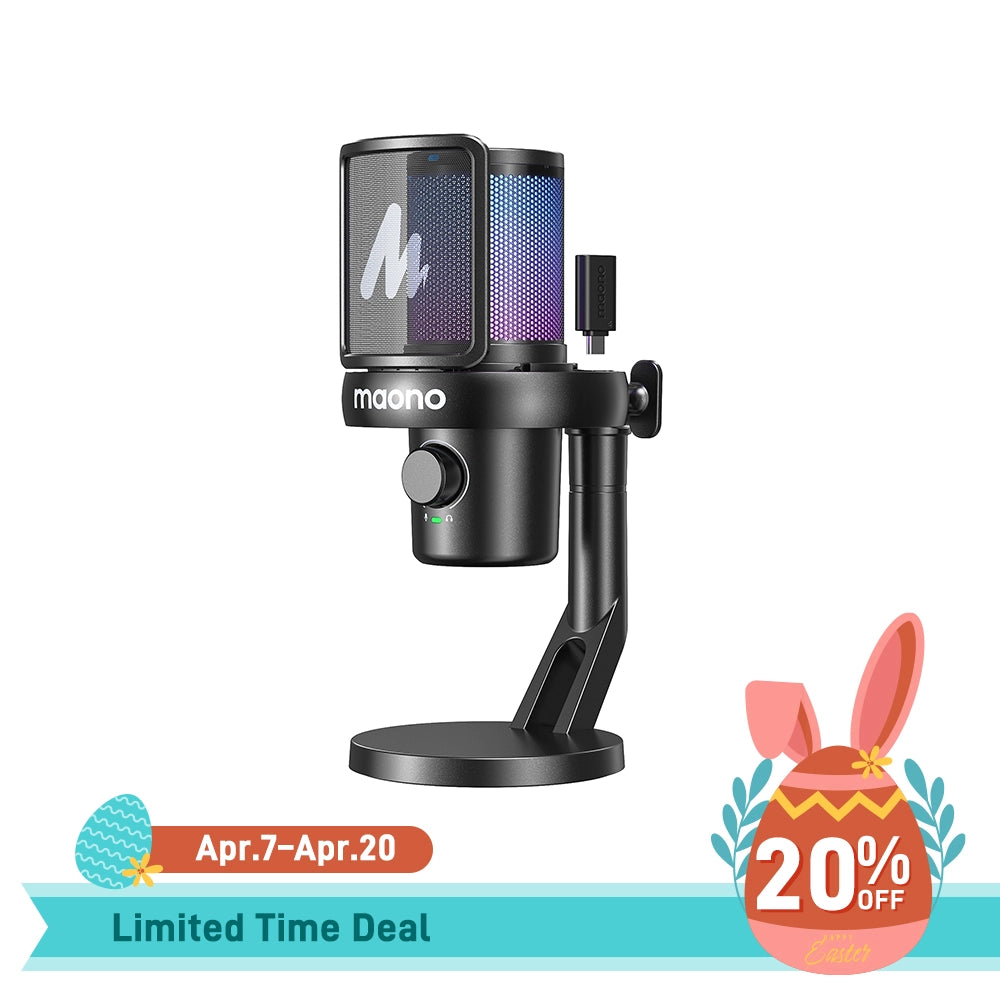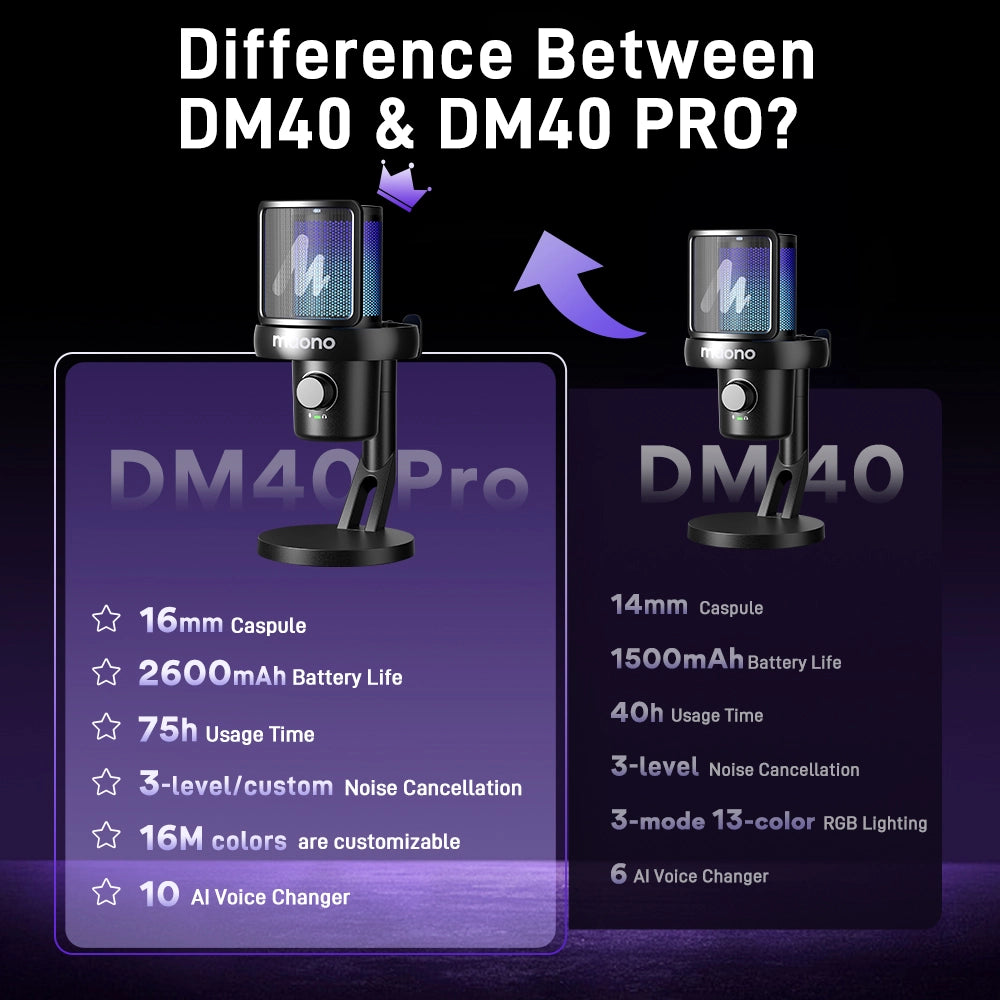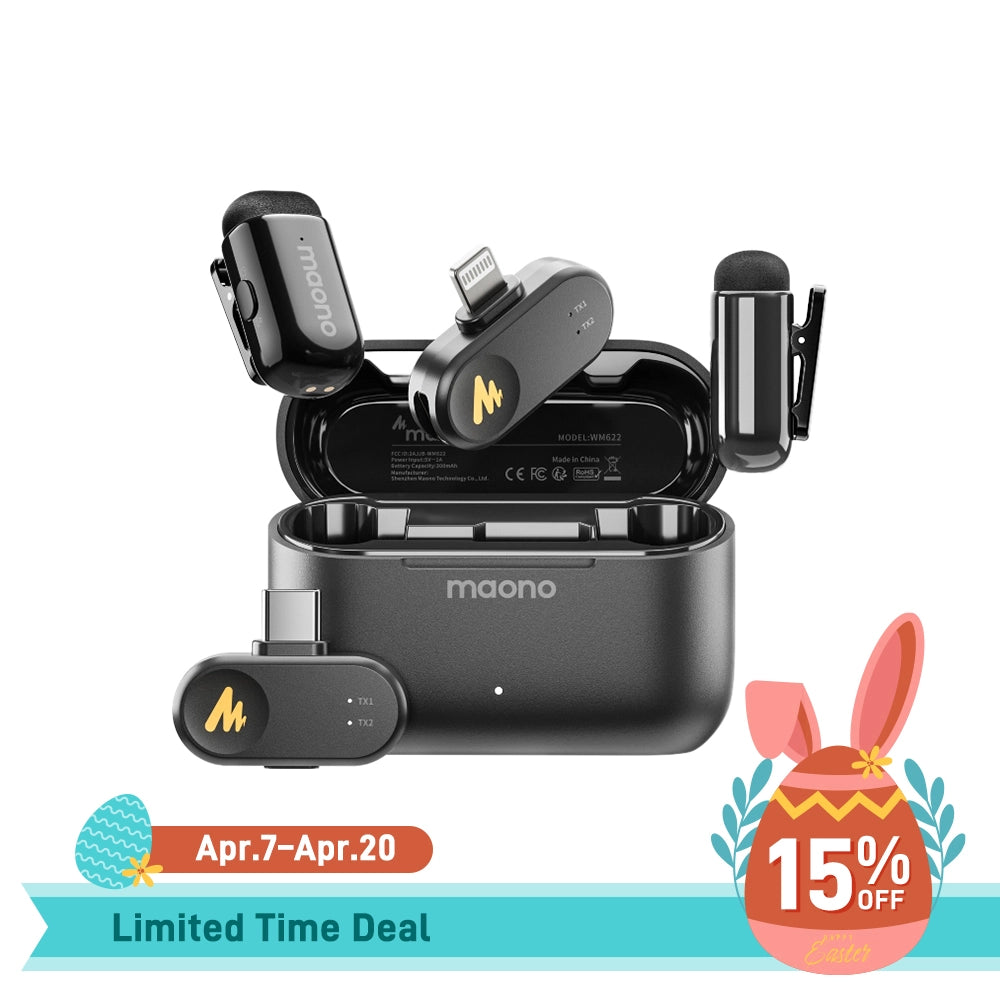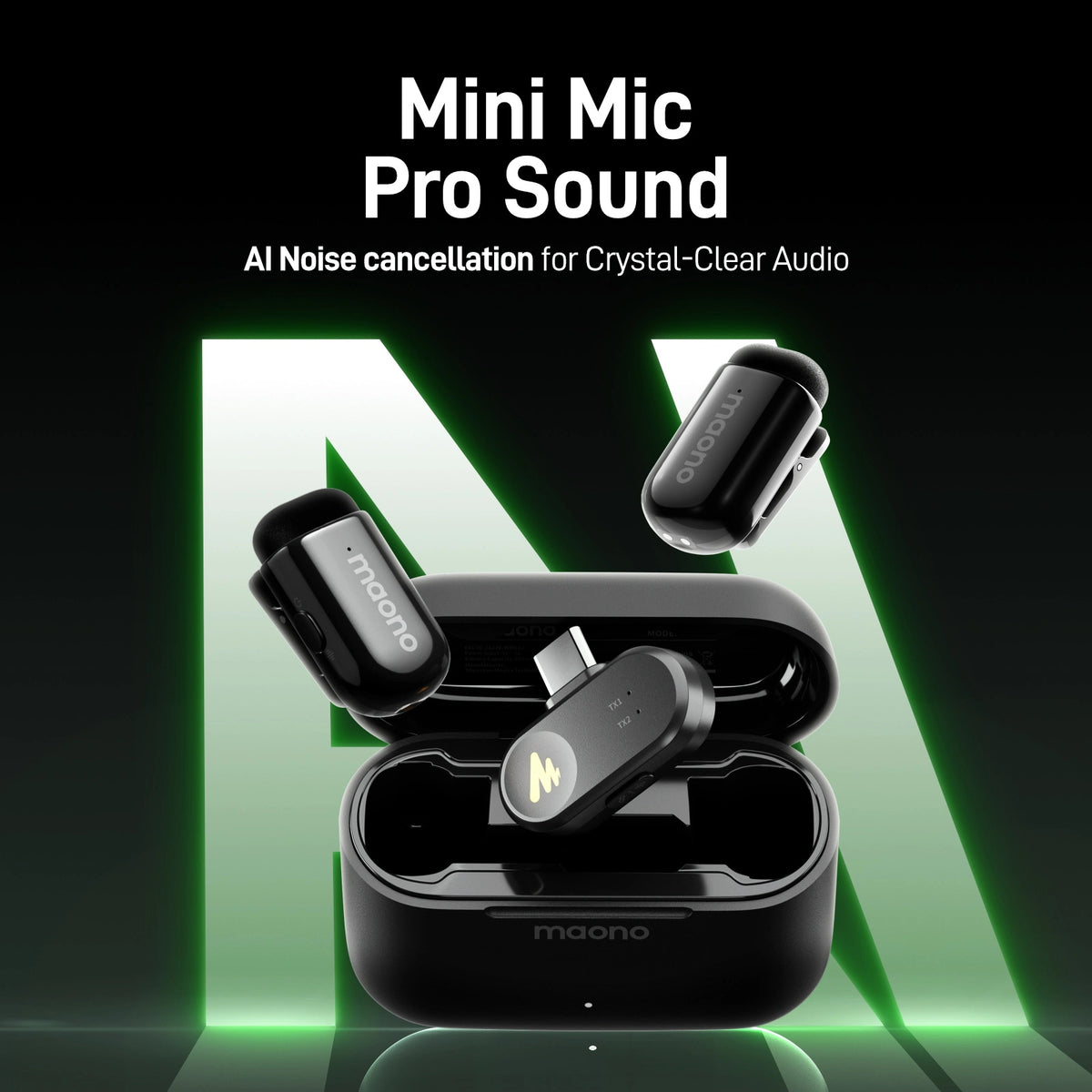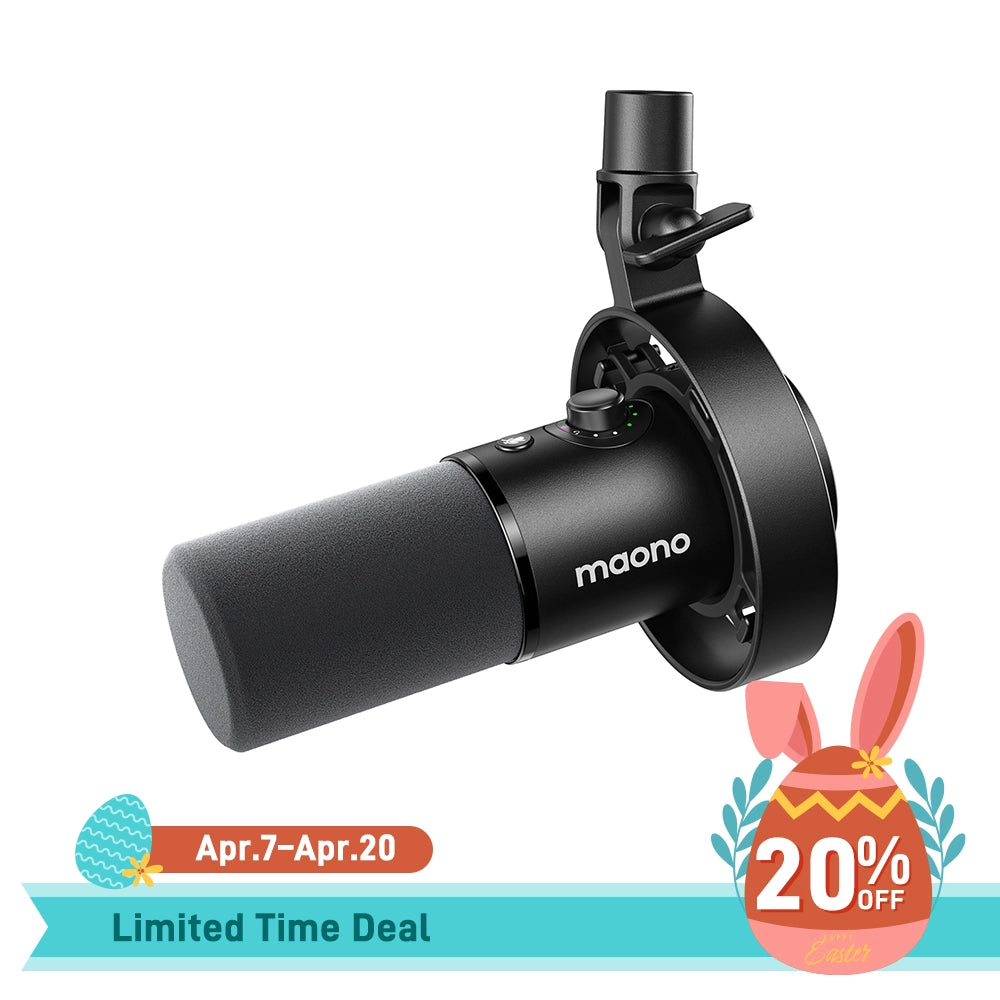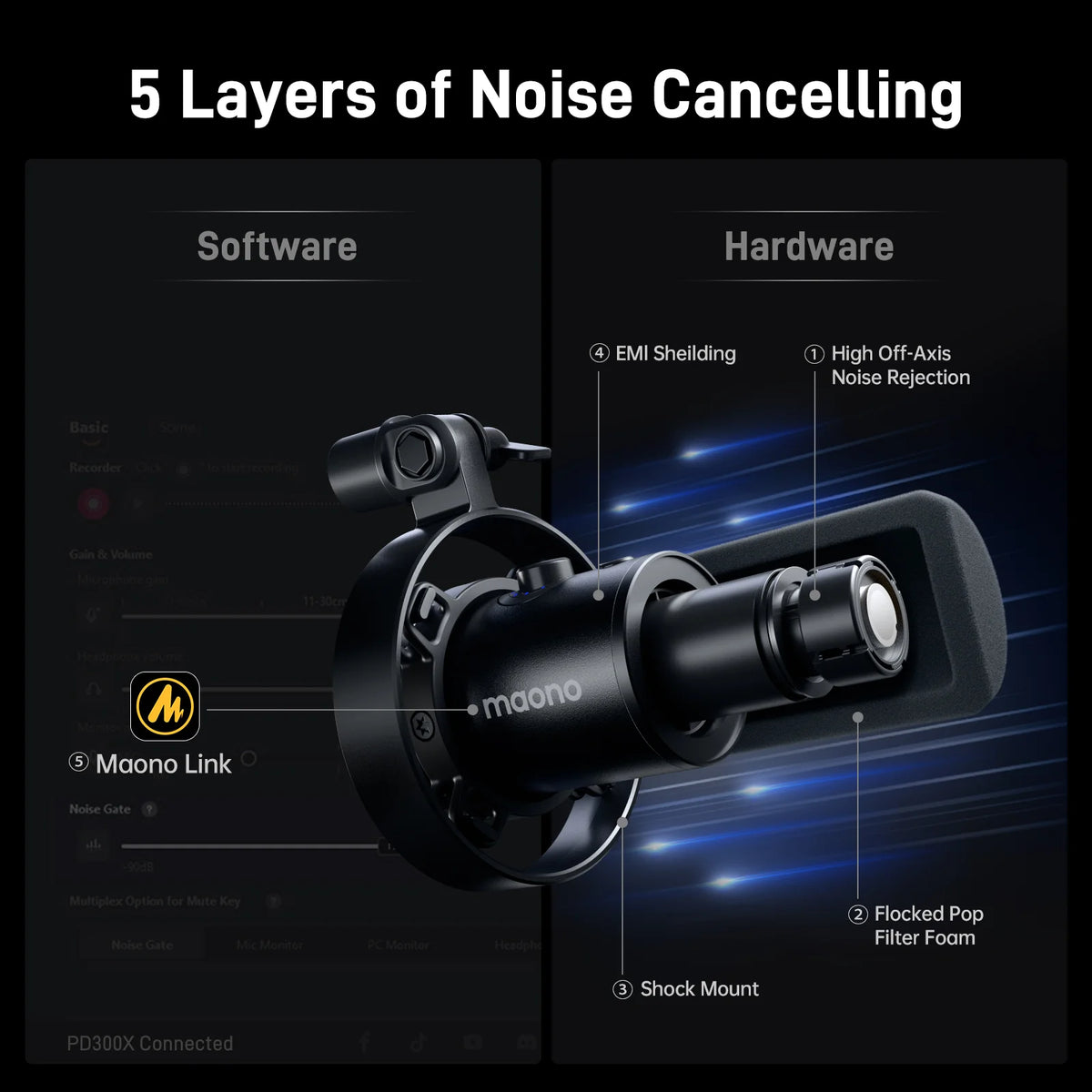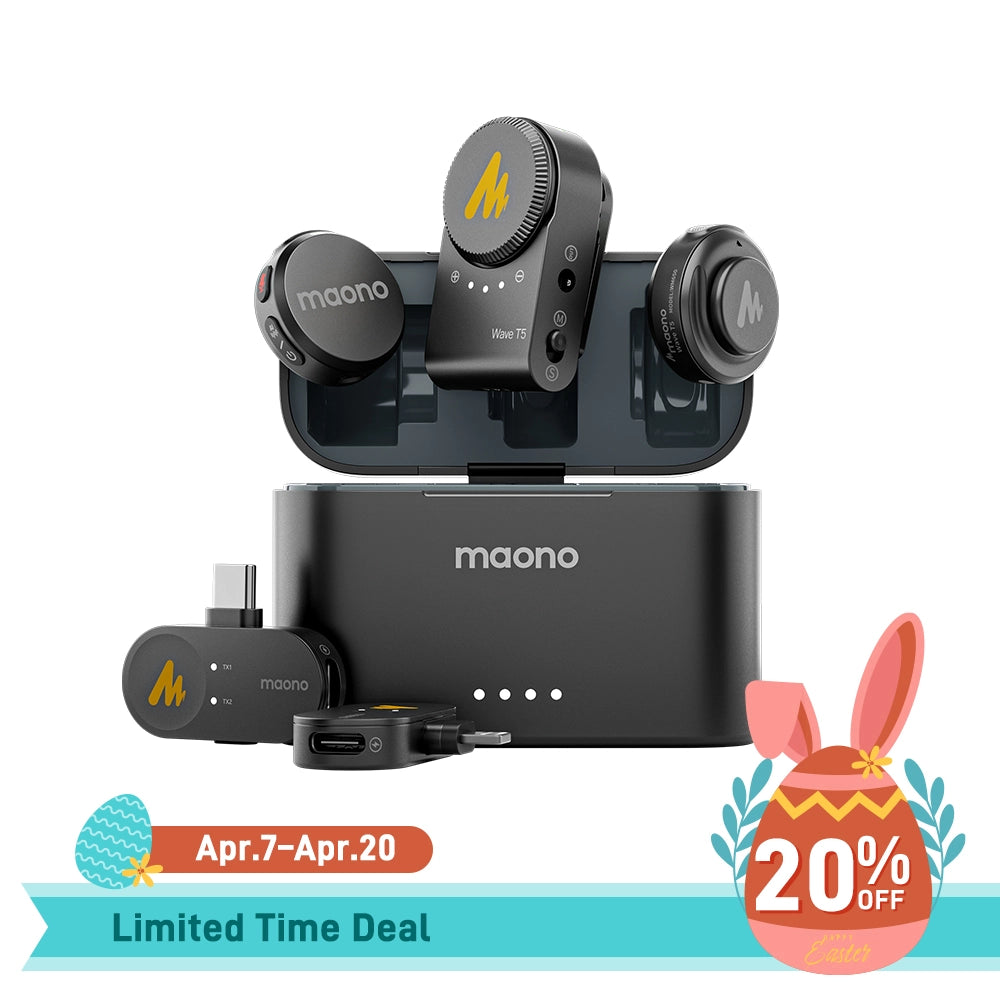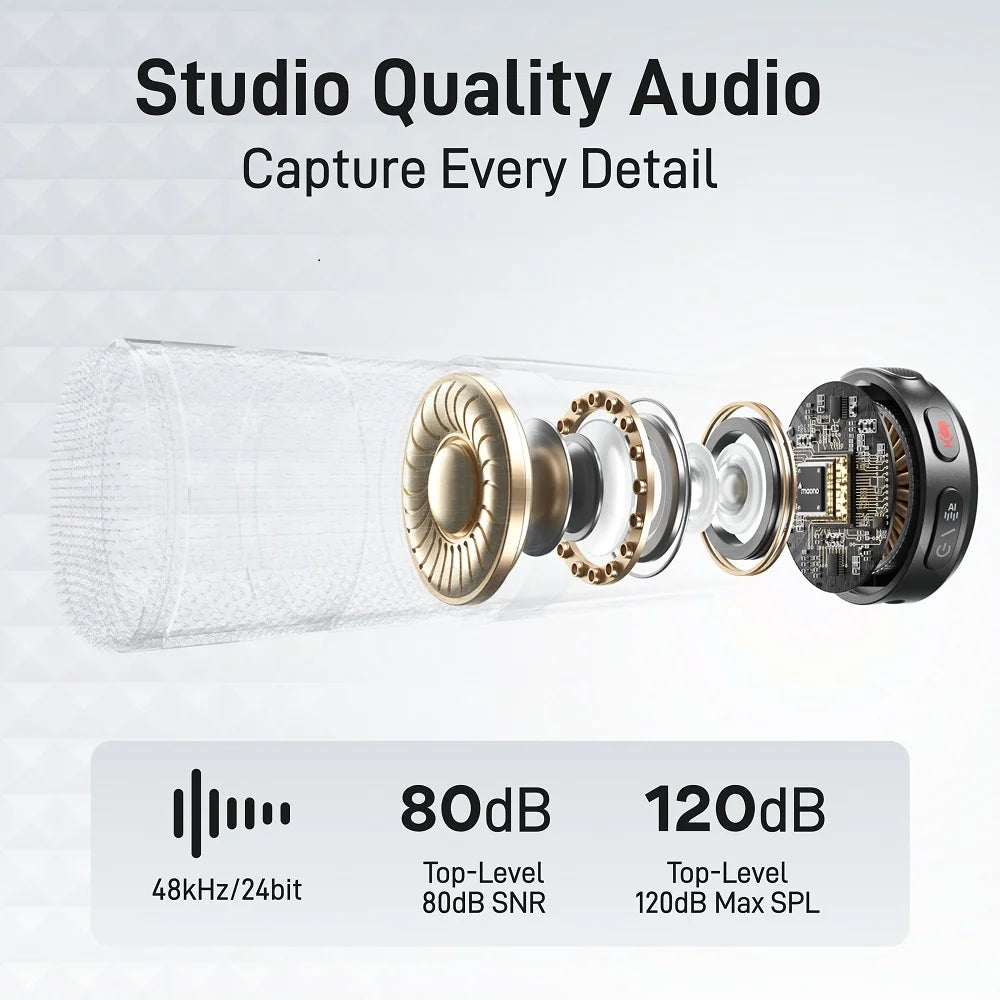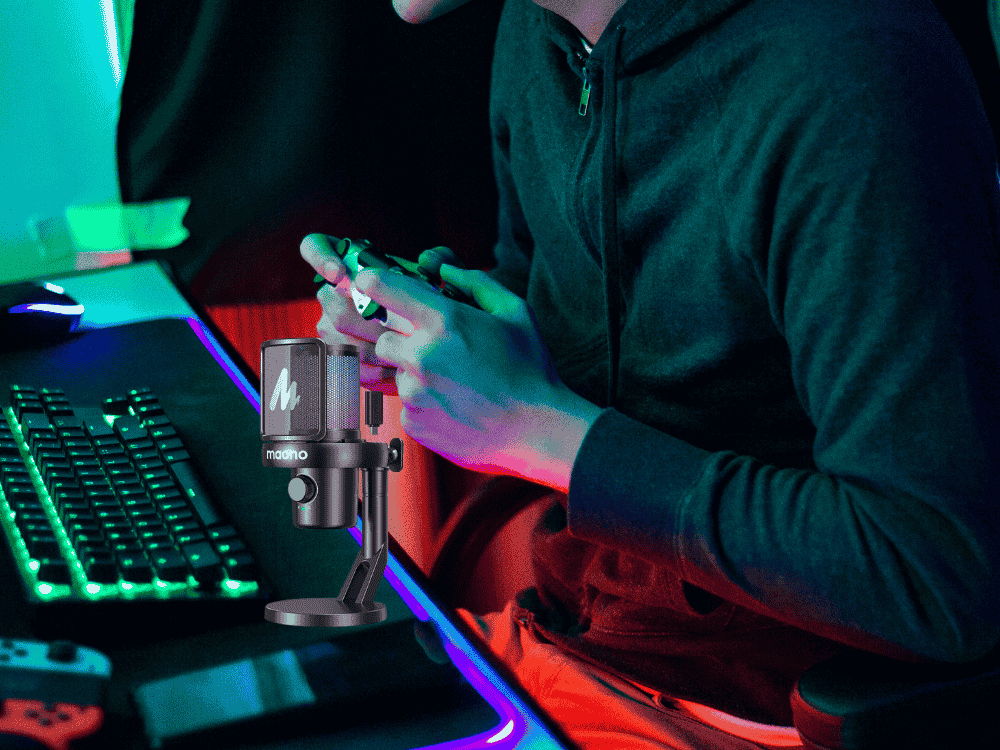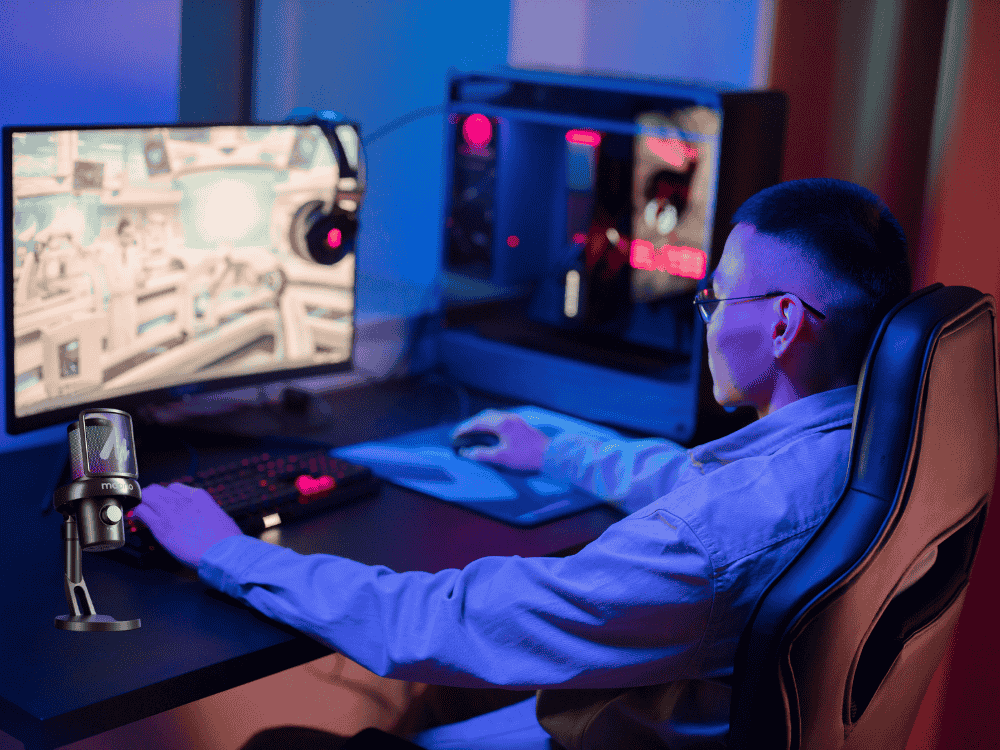Having the right microphone for games is increasingly important for today's gamers. Professional sound quality is especially crucial, particularly for gamers who are also live streamers or content creators seeking to attract new viewers and subscribers.
Gamers need certain types of microphones depending on their purpose. So, how do you select the right gaming microphone for PC? Start by figuring out how much you want to spend.
In this article, we will explore how to select the best microphones for gamers and discuss topics such as:
- Why a Good Microphone is Essential for Competitive Gaming
- Factors to Consider When Selecting the Best USB Microphone for Gaming
- Tips and Buying Guide for Gamers
Why Choosing the Right Microphone for Games is Essential
A gaming microphone is a special kind of microphone made just for gamers. It helps you talk clearly with your friends or opponents while you play games online. You can also use it to talk to your audience if you're streaming your gameplay. Having a good microphone is super important for serious gaming and here are the reasons why:
- To communicate clearly with teammates
A quality microphone helps you speak clearly with teammates and opponents, or when broadcasting, making it easier to coordinate and strategize during intense gaming sessions.
- To gain a competitive advantage among your opponents
Superior audio quality can give gamers an advantage by allowing them to hear important in-game sounds more clearly, like footsteps or enemy gunfire.
- It gives a professional image among gamers
Using the best gaming microphone with high-quality sound helps gamers appear more professional, improving how others see them in the gaming world and making them more likely to attract sponsorship deals.
- Team players work together effectively towards winning the game
Clear and good communication helps teammates coordinate better, leading to better performance and higher chances of winning in competitive games.
- For the audience to enjoy watching live streams
For gamers who stream or create content, a quality gaming microphone is necessary for providing interesting commentary, enjoyable streams, and high-quality content to draw in and keep viewers.
A good microphone is essential for competitive gaming because it meets the unique audio requirements of PC gaming. These unique requirements include the following:
- It ensures clear communication in multiplayer games where team coordination is critical.
- Noise-canceling features help filter out background noise, allowing your voice to be heard clearly even in noisy environments.
- The importance of directional sound capture cannot be overstated, as it ensures your voice is picked up accurately while minimizing unwanted ambient sounds.
This combination of features gives you a competitive edge, enhancing both your gameplay experience and team performance.
Top Streaming Microphones for PC
The Best Microphone for PC Gaming
Here are the top microphones PC gaming::
1. Blue Yeti X
Mic Type: USB Condenser Microphone
Polar Patterns: Cardioid, Bidirectional, Omnidirectional, Stereo
Connectivity: USB
Frequency Response: 20Hz - 20kHz
Pros:
✅ Multiple polar patterns for versatile recording options
✅ High-res LED metering for precise control over audio levels
✅ Built-in audio controls for easy adjustments
✅ Excellent sound quality
Cons:
❌ Slightly bulky design
❌ Higher price point compared to other USB mics
The Blue Yeti X is renowned for its exceptional sound quality and versatility, making it one of the best gaming microphones for PC globally. Its four-capsule array technology allows users to switch between different polar patterns, providing flexibility for various recording scenarios. The high-res LED metering feature lets streamers monitor their voice levels in real-time, ensuring optimal audio output. With built-in audio controls, users can easily adjust gain, mute, and headphone volume. Despite its bulkier design, the Blue Yeti X’s superior audio performance and user-friendly features make it a top choice for serious streamers.
2. HyperX QuadCast 2
Mic Type: USB Condenser Microphone
Polar Patterns: Cardioid, Bidirectional, Omnidirectional, Stereo
Connectivity: USB
Frequency Response: 20Hz - 20kHz
Pros:
✅ High-quality audio recording with 24-bit/96kHz resolution.
✅ Built-in shock mount reduces vibrations and unwanted noise.
✅ Tap-to-mute sensor with LED indicator for quick muting.
✅ Four selectable polar patterns for versatile recording options.
✅ User-friendly design with easy setup and controls.
Cons:
❌ Limited to red LED lighting; lacks customizable RGB options.
❌ Higher price point compared to some competitors.
The HyperX QuadCast 2 offers four selectable polar patterns, allowing users to tailor the microphone's pickup to various recording scenarios, from solo streaming to group podcasts. Its tap-to-mute sensor provides quick and silent muting, with an LED indicator that clearly shows the microphone's status. The built-in shock mount effectively dampens vibrations, ensuring clean audio capture even during intense gaming sessions. Additionally, the multifunctional control dial allows for easy adjustments of gain, volume, and monitoring levels directly on the device. While it features red LED lighting to indicate active status, users seeking customizable RGB lighting may consider the QuadCast 2 S variant.
3. Elgato Wave:3
Mic Type: USB Condenser Microphone
Polar Patterns: Cardioid
Connectivity: USB-C
Frequency Response: 70Hz - 20kHz
Pros:
✅ Superior audio quality with a built-in digital mixer
✅ Clipguard technology to prevent distortion
✅ Compact and sleek design
✅ Intuitive controls and software integration
Cons:
❌ Limited to cardioid polar pattern
❌ Higher price point
The Elgato Wave:3 is a premium choice for streamers looking for high-quality audio and ease of use. Its cardioid polar pattern is perfect for capturing clear and focused sound, ideal for solo streaming. The built-in digital mixer allows users to control multiple audio sources, integrating seamlessly with streaming software. Clipguard technology prevents audio distortion, ensuring crisp and clear sound even during loud moments. Its compact design and intuitive controls make it easy to use and set up. Although it only offers a cardioid pattern, the Elgato Wave:3’s superior sound quality and advanced features make it one of the best gaming microphones for PC.
4. Maono PD200XS
Mic Type: Dynamic microphone
Frequency Response: 40Hz - 16kHz
Polar Patterns: Cardioid
Connectivity: USB/XLR, USB Type-C
Pros:
✅ Suitable for gaming, podcasting, streaming, and professional voice recording
✅ USB connectivity makes it easy to use with computers and some mobile devices
✅ Built-in headphone jack for real-time monitoring
Cons:
❌ Limited frequency response compared to some condenser mics.
The Maono PD200XS is designed for content creators looking for a straightforward USB microphone with good audio quality and ease of use.
5. Maono DGM20 GamerWave
Mic Type: Condenser microphone
Frequency Response: 20Hz - 20kHz
Polar Patterns: Cardioid
Connectivity: USB/USB-C
Pros:
✅ Wide frequency response suitable for capturing detailed audio
✅ Designed with gamers in mind, but also suitable for streaming, podcasting, recording, video conference, and voiceovers
✅ Plug-and-play USB connection for easy setup and has noise reduction
Cons:
❌ May or may not pick up more ambient noise due to the sensitive condenser design
The Maono DGM20 GamerWave is aimed at gamers and content creators who need a versatile, USB-powered condenser microphone with clear audio capture capabilities.
6. Maono DM30RGB
Mic Type: Condenser microphone
Frequency Response: 20Hz - 20kHz
Polar Patterns: Cardioid
Connectivity: USB
Pros:
✅ Suitable for gaming and live streaming.
✅ Includes RGB lighting for visual appeal.
Cons:
❌ RGB lighting may be seen as unnecessary for some users.
The Maono DM30RGB combines audio performance with visual flair, offering a dynamic microphone with XLR connectivity and RGB lighting, catering to users who want both quality sound and aesthetic appeal in their setup.
Recommended Video:
Top Factors to Consider When Selecting the Best Microphone for Games

Selecting the best USB gaming microphone involves considering several factors to ensure it meets your needs and enhances your gaming experience. Here are some key ways to evaluate and choose the right USB microphone for gaming:
1. Audio Quality
Ensure the microphone records clear and sharp sound without any distortion or unwanted background noise. Maono microphones like the DM30RGB, DGM20 GamerWave, and PD200XS are specifically designed to capture clear and crisp audio, making them ideal for gamers who want to communicate with teammates or record their gameplay.

2. Directionality
Choose how the microphone picks up sound (like from one direction or all around- cardioid or omnidirectional) depending on where you're recording and how you plan to use it. Cardioid models capture sound from both the front and sides. Due to their cardioid polar pattern, Maono series microphones offer high-quality sound transmission. This makes them more versatile and the optimal choice for most microphones.
3. Connectivity
Determine whether you prefer a microphone that connects to your computer via USB cable or XLR cable, based on your setup and preferences. While USB connections are the most common and easiest to use, options for XLR and USB-C are also available. Not only does USB plug-and-play work in game mode, but the XLR socket, featured in the PD200X model, also facilitates future sound card upgrades. Maono gaming microphones support various connection types and come with cables, a blowout foam for the PD200X, and a pop filter for the GamerWave.
4. Performance and Durability
Seek out a gaming microphone that's well-built and can handle long gaming sessions and occasional knocks or bumps. The DM30RGB, DGM20 GamerWave, and PD200X USB plug-and-play microphones are all specifically designed for durability and performance to exceed the expectations of all gamers.
5. Sound Range/Frequency Response
Look at the microphone's ability to accurately capture different sounds by checking its range of frequencies. Ask yourself: Do I need a condenser or a dynamic microphone? If you're playing in a quiet environment, you can choose a dynamic microphone, as a condenser mic is more sensitive to background noise than a dynamic mic.
The typical audio sampling rates for gaming models are 44.1kHz or 48kHz. In the Maono mic series, GamerWave offers a frequency response of 80Hz-10kHz, while DM30RGB have a range of 20Hz-20kHz, and PD200X provides a frequency response of 40Hz-16kHz.
6. Compatibility and Setup
When choosing a mic for gaming, ensure it's compatible with your gaming system (like a PC or console) and the recording software you use. Ensure everything works for gaming by checking your system's requirements. Choose games that are compatible with different systems. Find software that works with your microphone. Keep everything up to date and try things out before making a purchase. You can also talk to other gamers to figure out what's best for you and your setup. For example, Maono manufactures top-notch microphones compatible with desktop or laptop computers, PlayStation 4, PlayStation 5, Mac, and Windows. The PD200X is also compatible with a mixer and audio interface.
7. Pricing
Set a budget and decide how much you're willing to spend, then compare different gaming microphone choices in that price range to find the one that gives you the best value for your money. Maono microphones are available at reasonable prices, with GamerWave priced at $41.99, DM30RGB at $49.99 each, and PD200X at $79.99.
8. Special Features
Consider microphone features such as one-touch mute button function, cardioid pickup, USB connectivity, gain adjustment for controlling microphone sensitivity, RGB lights control function, pop filter, blowout foam, boom arm compatibility, noise cancellation, and headphone monitoring. These features allow you to adjust and customize the volume to your preference. In general, these features are indispensable tools for dedicated gamers aiming to enhance both their gameplay and communication.
PC Gaming Audio Tips:

- Determine your budget
- Identify your gaming setup and requirements
- Consider the type of games you play and your gaming environment
- Familiarize yourself with the various types of gaming microphones (USB, XLR, wireless, dynamic, condenser, audio mixer, etc.)
- Research the pros and cons of each type read reviews, and seek recommendations from fellow gamers and online communities
- Consider factors such as brand reputation and availability of warranty and customer support
- Narrow down your choices and decide on choosing the best microphone based on your needs and preferences
- Once you have decided what microphone to buy, maintain regular cleanup and maintenance
- Change the settings in your gaming or streaming software to improve how your microphone sounds, such as making it louder or reducing unwanted background noises.
Conclusion
Selecting the right microphone for games that’s suitable for your needs is pretty easy. First, figure out your budget. The best mics for streaming come at different prices with various features. If you're starting out and your budget is around $50, go for either the DM30RGB or GamerWave microphone for a decent gaming experience. If you're into tweaking sound settings and want cool RGB effects, the DM30RGB is a great choice, especially for beginners.
Next, if you're willing to spend a bit more and want top-notch sound quality along with RGB lighting effects, consider the PD200XS microphone. Game streaming will never be the same with this Maono microphone for it offers USB plug-and-play easy setup, and it also has an XLR socket for future sound card upgrades.
With this info, you should have a clear idea of which microphone suits you best.
Selecting the right microphone for PC gaming can boost your gaming skills, which is a smart move for future victories, whether you're a casual or pro gamer. These microphones offer improved sound quality, easy-to-use features, noise-canceling tech, and comfy designs, elevating your gaming experience.
Also Read:
Which one is the better gaming mic: DGM20 VS DM30RGB?
How to Find the Best Computer Microphone for Gaming



